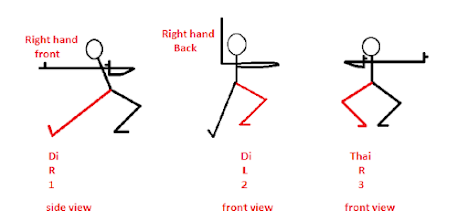Galilean Isochromism in Bharata Natyam
"Mathematics is the language in which God has written the universe" this statement by Galileo Galilee has inspired me to forage equations and expressions in the field of Mathematics. His tale of the search for information is filled with a quest to achieve what he dreamt of, stimulated every day, and motivated me to read and learn more about him during the early days of my childhood. I did fillip my students with his stories and success whenever necessary during the classes, and I realized students had fun learning about him, his invention, and his struggle. Many students even had tears at the corner of their eyes when we were left with only one question at the end of how passionate he was to go against the world to defend science to the antiquated society resulting in his own ruin was? I wished every day and prayed to God to fill me with that amount of passion for dance.
Jathi is a predominant part of Bharata Natyam dance items like Varnam, Padam, etc. Jathi is a combination of many adavu at different speeds. They are complicated in choreography and needs a large amount of attention from student to understand their rhythmic nature. Every Jathi is different, and it is very tiring to those who do not possess the required stamina and strength to execute it. One needs to be mentally alert while performing the Jathi and should be devoid of any other thoughts in mind. There is no place for disturbance in dance. If you are a person who cannot concentrate on one work for a considerable amount of time, then I am sorry, dance is not your cup of tea.
Guru is the one who prepares you for the universe, not for university. There was no second thought that my Guru Gayathri keshavan is the epitome of knowledge. As a teacher, I always observed her teaching methodologies and training techniques, which amazed me and made me realize that the secret of being a good teacher is, to be a good student.
Even though learning Jathi is quite a task, it was always fun learning. One such Jathi which I came across was in Nattukuranji Varnam. The fifth Jathi is vibrant in nature, and it is immediately succeeded by a swaram. The theermanam of this Jathi is in third speed, and it is choreographed to the first theermanam adavu. The speciality of this adavu is that the dancer's hands should move in a straight line from the front of the body to the back, maintaining the same distance of travel. I was under the impression that due to its high speed, I would never be in a condition to stretch my hands back to the same distance as I had stretched in front. I was wrong, and I knew that I was not completing the step. The back and forth movements were supposed to be of equal distance and in the same duration.
My teacher said," You are not making an effort to complete it." " It's your body, so learn how to take command over your own hands and legs. That movement was an eye-opener, and I saw Galileo Galilee in front of me. For an instant, he was standing in front of me and talking to me about the concept of Isochronism.
At the time of the world, where there were only mechanical watches in very few places, and around ninety per cent of the world had not seen what even a clock was, a young twenty-year-old Galileo galilee developed a concept called Isochronism. It's hard to believe, but it's true Galileo Galilee was the first physicist and a mathematician to obverse and measure the time taken by a pendulum to travel back and forth. A young Galileo observed the lamp swinging from a cathedral ceiling next to the leaning tower of Pisa.
Obviously, there were no wrist watches back then; hence, the clever young boy used his own pulse of the left hand to measure the time taken by a lamp to swing back and forth, and he concluded the result and called it the law of Isochronism. Galileo discovered that the period of swing of a pendulum is independent of its amplitude, the arc of the swing. This is the Isochronism of the pendulum.
Isochronism is the property in which an oscillator, such as a pendulum or balance, has a period independent of oscillator amplitude. In Layman's terms, the time taken by a balance to swing back and forth remains the same irrespective of the pendulum's length. This is the property of Isochronism.
The words " the period of swing of a pendulum is independent of its amplitude" was thought-provoking and life-changing words for me where I realized just like the length of the pendulum has nothing to do with the time of oscillation, the time of third speed Jathi has nothing to do with the range of the hand. If one decides they have to reach the maximum length of the movement, then the rate of the song, be it in 3rd speed or 1st speed, will not affect.
All our mental strength comes before physical strength; if you think you can do it, the body will automatically support you to achieve it. I have not seen Galileo Galilee, but I saw him in my teacher, who has the same vision to look at the dance the way he looked at physics and mathematics.








I was not much knowledgeable about Galileo and the way you explained about math and dance mesmerised me and am sure all readers will rise up in love with classical art 😇
ReplyDeleteI am glad it inspired you.
ReplyDelete